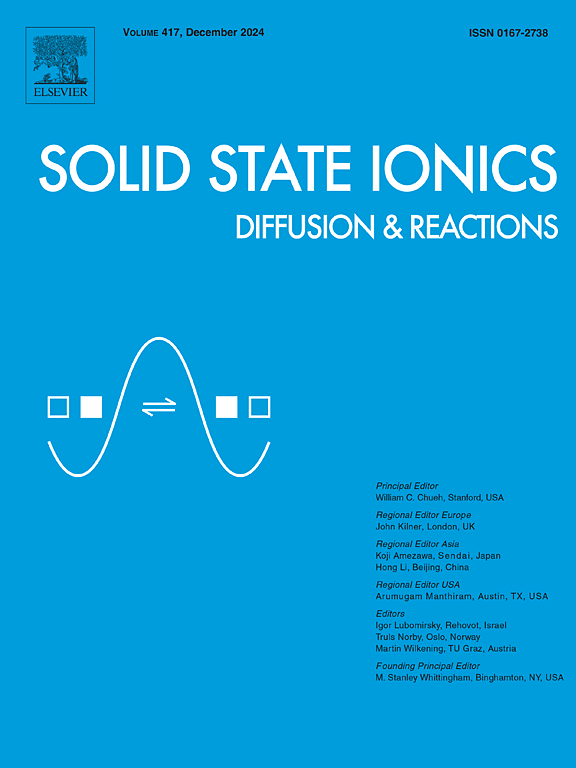Flexible piezoresistive sensors with high sensitivity and ultra-wide pressure range based on alkalized MXene
IF 3
4区 材料科学
Q3 CHEMISTRY, PHYSICAL
引用次数: 0
Abstract
Flexible pressure sensors, characterized by the high sensitivity and broad detection range, have gathered significant interest for applications in wearable electronics and human-machine interfaces. Despite their potential, the development of such sensors remains a formidable challenge. In this study, we report the fabrication of a flexible, highly sensitive piezoresistive sensor featuring a pleated architecture. This sensor was crafted from thermoplastic polyurethane (TPU) as the base material and a spun film serving as the flexible substrate, utilizing an electrospinning technique. The integration of MXene, which was subjected to structural optimization via alkaline treatment with sodium hydroxide (NaOH), was achieved through an impregnation and coating process onto the TPU film. The resulting MXene-composite sensor exhibits remarkable sensitivity (2.88 kP−1), an extensive detection range (up to 300 kPa), rapid response time (100 ms), and superior stability over more than 5000 cycles. The sensor's versatility is demonstrated through its successful deployment in capturing a variety of physiological signals from the human body, such as pulse, respiration, and swallowing, as well as in monitoring full-body motion in real-time, including movements of the fingers, wrist, and sole of the foot. Furthermore, its application as a component of flexible electronic skin underscores its immense potential for integration into physiological analysis systems, humanoid robotics, and biomedical prosthetics.
基于碱化MXene的高灵敏度、超宽压力范围的柔性压阻传感器
柔性压力传感器具有灵敏度高、检测范围广的特点,在可穿戴电子产品和人机界面领域的应用引起了人们的极大兴趣。尽管具有潜力,但这种传感器的发展仍然是一个艰巨的挑战。在这项研究中,我们报告了一种具有褶皱结构的柔性,高灵敏度压阻传感器的制造。该传感器由热塑性聚氨酯(TPU)作为基材,利用静电纺丝技术制成的纺丝薄膜作为柔性基板。通过氢氧化钠(NaOH)碱性处理优化MXene的结构,通过浸渍和涂覆工艺在TPU薄膜上实现了MXene的集成。由此产生的mxene复合传感器具有显著的灵敏度(2.88 kP−1),广泛的检测范围(高达300 kPa),快速的响应时间(100 ms),以及超过5000次循环的优越稳定性。该传感器的多功能性通过其成功的部署来证明,它可以捕获来自人体的各种生理信号,如脉搏、呼吸和吞咽,以及实时监测全身运动,包括手指、手腕和脚底的运动。此外,它作为柔性电子皮肤的组成部分的应用强调了它在整合生理分析系统、人形机器人和生物医学假肢方面的巨大潜力。
本文章由计算机程序翻译,如有差异,请以英文原文为准。
求助全文
约1分钟内获得全文
求助全文
来源期刊

Solid State Ionics
物理-物理:凝聚态物理
CiteScore
6.10
自引率
3.10%
发文量
152
审稿时长
58 days
期刊介绍:
This interdisciplinary journal is devoted to the physics, chemistry and materials science of diffusion, mass transport, and reactivity of solids. The major part of each issue is devoted to articles on:
(i) physics and chemistry of defects in solids;
(ii) reactions in and on solids, e.g. intercalation, corrosion, oxidation, sintering;
(iii) ion transport measurements, mechanisms and theory;
(iv) solid state electrochemistry;
(v) ionically-electronically mixed conducting solids.
Related technological applications are also included, provided their characteristics are interpreted in terms of the basic solid state properties.
Review papers and relevant symposium proceedings are welcome.
 求助内容:
求助内容: 应助结果提醒方式:
应助结果提醒方式:


